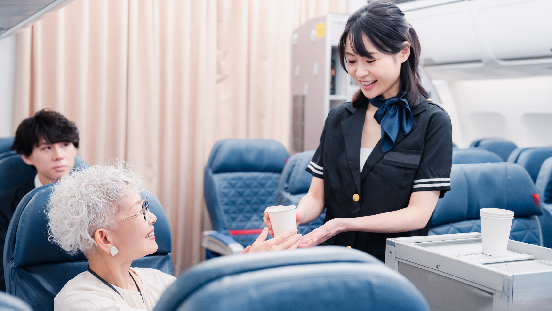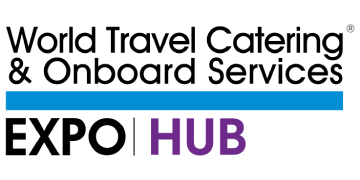Kai Kosicki, WTCE Technology Ambassador, Consultant for the Hayward Partnership and Founder of ExpAir
The airline industry is currently in a transitionary period. Driven by technological advancements, evolving passenger expectations, and a shift towards sustainability, airlines are under pressure to adapt their offering to meet the needs of a diverse cohort of stakeholders.
New and innovative technologies present an exciting opportunity for airlines to increase their revenue, boost passenger satisfaction and reduce operational costs. But what technologies should they be investing in? How should they approach this transition? And what factors should be considered throughout the implementation process?
To make these decisions, it’s essential that airlines are continuously getting to know their passenger demographics, and biggest priorities. For example, recent research from the International Air Transport Association (IATA)1, suggests that speed and convenience are still the most important factors for travellers when booking their flights. Looking into passenger preferences is crucial to inform the development of targeted in-flight experiences that cater to these preferences.
Connectivity is key
Technology is the key to helping airlines transform their offering to passengers and create new revenue streams. However, to enable these technologies, primarily, you need to be able to connect the plane to the ground. This requires some form of connectivity, which allows for reliable data transfer between the aircraft and ground stations, enabling a range of services, such as purchasing goods and services.

Creating a virtual marketplace
Once an aircraft is connected, airlines can significantly boost revenue by transforming the passenger cabin into a virtual marketplace through various avenues.
Cabin connectivity holds a world of possibilities for airlines. On a basic level, it allows passengers to conduct in-seat ordering of food, beverages, and other services, helping to provide a more personalised, tailored service.
While catering is never going to be a significant driver from a revenue perspective, it’s an essential part of the passenger experience and satisfaction. For example, research2 has shown that food quality and safety during flights are an important determining factor which can affect the airline passengers choose to fly with.
However, the potential of onboard connectivity extends far beyond catering. Airlines can leverage this technology to create new revenue streams and enhance the passenger experience. By offering a wide range of services directly to passengers, airlines can tap into new markets and increase their revenue. For instance, some potential new revenue streams include:
- In-flight retail: Online shopping for duty-free goods, travel accessories, and other products, either delivered on board or after landing
- Travel services: Booking hotels, car rentals, and tours directly from the seat.
- Financial services: Offering banking and insurance products.
- Advertising: Displaying targeted ads to passengers based on their preferences and browsing history.

By partnering with other businesses, airlines can further expand their offerings and create additional revenue opportunities. For example, airlines could collaborate with retailers to offer exclusive deals and promotions to passengers. They could also partner with travel agencies to provide comprehensive travel packages.
Additionally, by making use of passenger data, airlines can look to use this information to personalise and package up relevant services for individuals onboard. However, it’s crucial to ensure that this data is being handled responsibly and complying with relevant, regional data privacy regulations to maintain passenger trust.
The rise of inflight connectivity
Despite the immense potential of onboard connectivity and the widespread availability of Wi-Fi on the ground, it’s still not universally adopted across all airlines and flights. For example, many major airlines like Delta, American Airlines, United, and Emirates offer Wi-Fi on most flights, showcasing its growing adoption. Meanwhile low-cost carriers like easyJet, Norwegian, and JetBlue also provide various connectivity options. However, Ryanair, the largest European airline by passenger volume and fleet size3–stands out for its lack of in-flight connectivity. This suggests that a significant segment of travellers prioritises cost over additional onboard features.
That said, the proportion of airlines that provide inflight connectivity is increasing. According to Statistica4, by 2031, the in-flight Wi-Fi connectivity market is expected to reach 39 billion USD, due to the increase in the number of commercial aircraft in the global fleet–up from 8.14 billion USD in 2023.
While many airlines now offer Wi-Fi, in many cases it’s not a complimentary offering, and the quality and speed can be inconsistent, particularly on longer flights. However, if connectivity is the key to facilitating these additional technologies and services, why isn’t Wi-Fi currently a free and standardised service across all airlines and carriers?
Challenges in implementation
Primarily, installing Wi-Fi on aircrafts is expensive and requires grounding aircraft for extended periods. This results in a certain product inconsistency until the entire fleet has been modified. Additionally, the certification cycles for new technologies onboard can be lengthy as aviation authorities have strict regulations to ensure safety and reliability. With this in mind, it’s easy to see why onboard connectivity hasn’t yet been universally adopted across all airlines and aircraft.
Despite the difficulties around implementation, if airlines are able to turn the concept of the onboard cabin marketplace into a reality, the possibilities for both revenue growth and passenger satisfaction are truly endless.
Airlines that can successfully navigate these challenges stand to gain a competitive advantage by offering a more engaging and enriching travel experience. By embracing innovation and prioritising passenger needs, the inflight marketplace is poised to take off.
- https://www.iata.org/en/pressroom/2023-releases/2023-10-25-01/#:~:text=Proximity%20to%20the%20airport%20was,than%20ticket%20price%20(31%25) ↩︎
- https://pmc.ncbi.nlm.nih.gov/articles/PMC9291440/ ↩︎
- https://www.statista.com/statistics/1094759/largest-airlines-in-europe-based-on-passengers/#:~:text=In%202023%2C%20Ryanair%20was%20the,amounting%20to%20182%20million%20passengers ↩︎
- https://www.statista.com/statistics/624184/inflight-wifi-market-size/ ↩︎
Join us at World Travel Catering & Onboard Services Expo
Join the industry’s main marketplace for a world of inspiration to enhance the onboard experience.
Join us from 14-16 April 2026 at Hamburg Messe.
